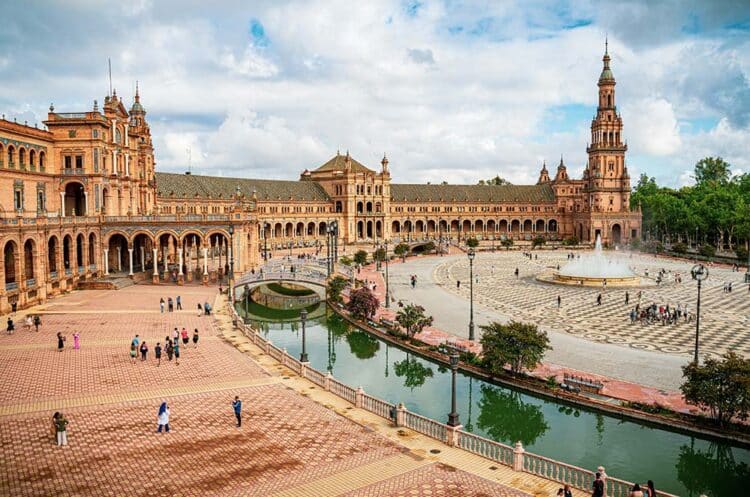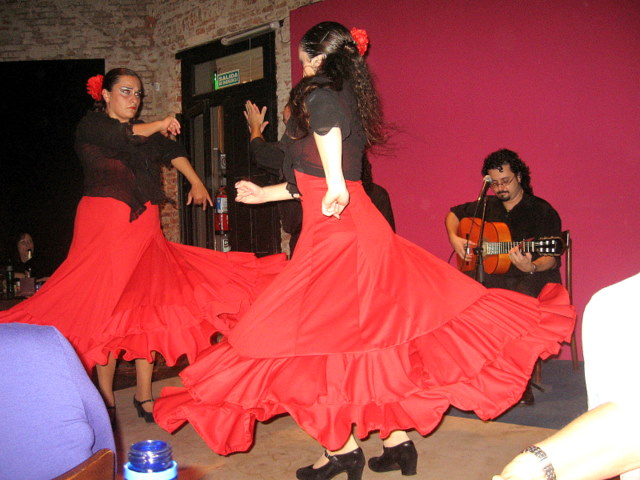Seville is a metropolis that leaves you breathless. Its tradition, meals, folks, and local weather make this place unforgettable, however the true magic lies within the structure. Past Alcázar and the Cathedral, this metropolis reveals hidden channels, forgotten palaces, and hidden passageways that not often see the sunshine within the guidebooks.
For vacationers who prefer to discover extra, these 5 areas are excellent locations for a richer view of the town’s previous.


Why Select Seville?
This metropolis has a beautiful mix of tradition, environment, and historical past. The Gothic cathedral, flamenco rhythms echoing by means of streets, great buildings, and slim streets convey soul to this place. It’s walkable, genuine, and it’s superb for anybody who desires extra than simply sightseeing. Seville has so many rewards for anybody curious, whether or not that’s meals, traditions, or structure. There’s one thing for everybody.
One in all Spain’s most iconic cities – Seville – captures the fervour and heat of the nation’s wealthy historical past and heritage, and its energetic spirit. The perfect time to go to Seville is taken into account to be throughout spring or fall, particularly due to the delicate climate, and it’s walkable with out the summer season warmth.
Native Secrets and techniques to Seville’s Soul
Locals are on the coronary heart of this metropolis. They carry tales, legends, and traditions which are typically not talked about in guidebooks. Data and private expertise reveal the real spirit of Seville. Small hidden items, centuries-old buildings with an related custom, supply authenticity to vacationers.
Understanding the fantastic thing about Seville’s historical past and tradition higher comes from attending to know locals. The prospect to listen to legends, tales, and have a far more genuine expertise goes up should you go to high-quality, curated non-public excursions.
When in Spain, Seville non-public excursions will all the time show higher than common ones as a result of not solely do they work additional exhausting to face out and get nice critiques, however you’ll be able to possible additionally ask them for a bit additional by way of questions/solutions, them displaying you extra of the town, or maybe one thing that they don’t often present, and so on.
Plus, experiencing Seville’s dynamic festivals, resembling Semana Santa, Feira de Abril, affords a glimpse into its traditions and group spirit.
Santa María Magdalena Church
This baroque church is close to the Guadalquivir Riva. The church was constructed within the late 1600s and is an impressive instance of Andalusian Baroque.
In case you’re wanting on the church’s inside, the gold-and-red altarpieces paired with the frescoes are merely gorgeous. A whole lot of guests on non-public strolling excursions are shocked to be taught the truth that this church was used for royal baptisms a very long time in the past.
It’s an genuine instance of how Seville’s structure displays the transformation from Islamic to Catholic types after the Reconquista.
Convento de Santa Paula
Many convents are closed to the general public in Seville, however Santa Paula opens its doorways by appointment and on sure days. The convent was constructed within the fifteenth century with a mixture of Gothic and Mudéjar parts. It has a phenomenal brick facade on the surface and a peaceable courtyard inside.
There’s a renaissance altar and a small museum that provide a glimpse into how devotional/sacred objects are formed by artwork and design. Right here, the nuns make their very own marmalade and sweets, a reality that non-public tour guides used to attach with Seville’s structure and traditions.
The key of this conventional marmalade has been saved for hundreds of years and generations.
Casa de Pilatos
Casa de Pilatos was created by combining Gothic, Renaissance, and Roman types within the fifteenth century.
For vacationers, the courtyards, Roman sculptures, and intricately tiled rooms are really a sight to behold. One phrase: speechless. A personal information will help you interpret all of the inscriptions, types, and all the numerous symbolic meanings, plus different attention-grabbing information that introduce the historical past of this constructing.
This elegant place is called the small Alcázar due to that particular, wealthy element and format.
Hospital de los Venerables
The unbelievable Baroque-style constructing consists of courtyards, an ornate chapel, and a library from the seventeenth century. There are additionally works by Diego Velázquez and occasional artwork exhibitions. This constructing was used for retired clergymen who discovered themselves in tough occasions. Subsequently, the tranquility of the courtyard and the constructing itself is a supply of peace and therapeutic.
Non-public guides can reveal numerous tales and hidden corners and set up particular entry to many areas. The thought is for guests to really feel that peaceable environment and creative treasures.
Palacio de la Condesa de Lebrija
This Sixteenth-century villa alongside Calle Cuna blends in completely with the row homes from the surface – however inside the home… there’s a complete museum of Roman mosaics relationship all the best way again to the 2nd century.
Within the early 1900s, the Countess of Liberia dug up and transported Roman mosaics from throughout Spain to her dwelling. The passionate archaeologist painstakingly excavated them, moved them, and reassembled them piece by piece.
A mixture of Renaissance particulars and Arabic arches reveals the layers of Seville’s previous in a single constructing.
Conclusion
Each palace right here has a narrative, from secret church buildings to Roman mosaics, centuries-old tiled patios, and lots of others. Seville can also be the oldest royal place nonetheless in use, which brings additional allure to its great traditions and historical past.
Locals assist preserve these tales alive and necessary for his or her lives, not only for their very own heritage, however for curious vacationers who come to see the town’s hidden gems.



